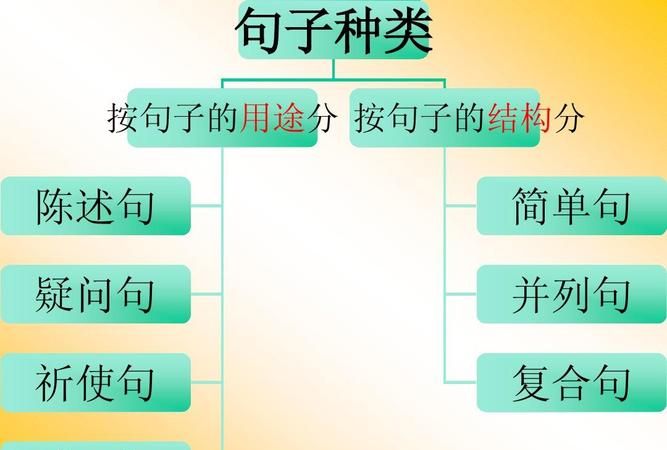本文目录
英语中发生否定转移的词有哪些
初中英语语法对否定转移的用法及总结
下文是老师为同学们带来关于在什么情况下会使用到否定转移,希望可以帮助到大家。

否定转移
1) 将think, believe, suppose, expect, fancy, imagine等动词 后面宾语从句的否定词转移到主句中,即主句的谓语动词用否定式,而从句的谓语动词用肯定式。
I don't think I know you. 我想我并不认识你。
I don' t believe he will come. 我相信他不回来。
注意:若谓语动词为hope,宾语从句中的否定词不能转移。
I hope you weren't ill. 我想你没有生病吧。
2) 将seem, appear 等后的从句的否定转移到前面。
It doesn't seem that they know where to go.
看来他们不知道往哪去。
It doesn't appear that we'll have a sunny day tomorrow.
看来我们明天不会碰上好天气。
3) 有时将动名词,介词短语或整个从句的否定转变为对谓语动词的否定。
I don't remember having ever seen such a man.
我记得从未见过这样一个人。 (not否定动名词短语 having…)
It's not a place where anyone would expect to see strange characters on the street.
在这里,人们不会想到在街上会碰上陌生的人。
(anyone 作主语,从句中的谓语动词不能用否定形式。)
4) 有时状语或状语从句中否定可以转移到谓语动词前。
The ant is not gathering this for itself alone. (否定状语) 蚂蚁不只是为自己采食。
He was not ready to believe something just because Aristotle said so. (否定because状语) 他并不因亚里斯多德说过如何如何,就轻信此事。
She had not been married many weeks when that man's younger brother saw her and was struck by her beauty. (否定状语many weeks) 她结婚还不到几个月,这个人的弟弟就看见她了,并对她的美貌着了迷。
同学们可以适当的用例句来理解,这样比较方便记忆而且记得也会比较牢固!
初中英语语法大全:动词的种类
关于英语中动词的种类知识,希望同学们很好的掌握下面的内容学习。
动词的种类
动词是表示动作或状态的.词,按其词义和在句子中的作用可分为行为动词,连系动词,助动词和情态动词。
1.行为动词
行为动词可分为及物动词 (vt)和不及物动词(vi),及物动词表示动作或状态,有完整的词义,能单独作谓语,后跟宾语;不及物动词表示动作或状态,有完整的词义,能单独作谓语,但后面不能直接跟宾语,如要带宾语则与介词或副词构成短语。
如:
More and more people study English.(vt)
The students are listening to the teacher carefully.(vi)
2.连系动词
连系动词本身有一定的词义,但不能独立作谓语,必须与表语一起构成谓语。常用的连系动词有 be, get, turn, become, look, feel, grow, seem, sound, taste, smell等。
如:
Our country is becoming stronger and stronger.
It feels damp.
3.助动词
助动词本身无词义,不能单独作谓语,只能和主要动词一起构成谓语动词,表示否定,疑问及动词的时态、语态、人称和数等语法特征,助动词有 be,do,have,shall,will等。
如:
How do you usually come to school?
The children are playing yo-yo now.
4.情态动词
情态动词本身有一定的意义,但不能独立作谓语,只能和主要动词原形一起构成谓语,表示说话人的语气和情态。情态动词没有人称和数的变化。情态动词有 can (could),may(might),must, need, ought to, dare等。
如:
Can I help you?
- Must we go now? -No, you needn't .
a. can与be able to的用法有所区别。can只用于一般现在时和过去时,指本身有能力的"能";be able to用于各种时态均可,指须经过努力而"能"。
b. must与have/has to的用法。must表示说话人主观认为"必须",只用于一般现在时和一般将来时;have/has to表示客观需要,意为"不得不",它可用于各种时态。
c.need和dare既可作情态动词也可作行为动词。
以上对动词的种类知识的内容讲解学习,相信同学们已经能很好的掌握了吧,希望同学们在考试中取得很好的成绩。
初中英语语法大全:动词不定式的形式
对于英语的学习中,关于动词不定式的形式知识点的内容,我们做下面的讲解学习哦。
动词不定式的形式
1.作主语。 如:
To learn English is very important.
但实际上不定式作主语常用 it来作形式主语,而将不定式移至谓语动词后作真正的主语。
如上句可表达为:
It's very important to learn English.
2.作表语。 如:
My idea is to ring him up at once.
3.作宾语。 如:
I have decided to go to Binjiang Primary School.
4.作宾语补足语。
a. ask, want, teach, tell, know, would like, allow等动词后面接动词不定式作宾语补足语。
如: The policemen asked him to get off the bus.
b. hear, see, look at, feel, watch, notice, listen to等动词后接不带to的动词不定式作宾语补足语。
如: We often see Miss Li clean the classroom.
c. let, make, have这些使役动词后接不带to的动词不定式作宾语补足语。但在被动语态中这些不带to的都须带上to。
如: In those days the bosses often made the workers work day and night.
d.动词help接动词不定式作宾语补足语,可带to也可不带to。
如: Can you help me (to) carry the heavy bag?
5.作定语。
a.与被修饰词有动宾关系。如:I have something important to tell you.但如果不定式动词为不及物动词,后面的介词千万不要省略。
如: Maybe they have three rooms to live in.
b.与被修饰词有主谓关系。
如: Mr Liang is always the first to come and the last to leave.
c.与被修饰之间只有修饰关系。
如: I have no time to play cards.
6.作状语,表示目的、原因、方法、方向、结果等。
如: I'll go to meet my friend at the railway station.
7.不定式复合结构"for sb. to do sth" 作主语时,常用"It is +adj+ for
of sb. to do sth"的句式。形容词good, bad, polite, unkind, kind, ice, clever,
right, wrong, careful等用"It is +adj +of sb. to do sth."
其他形容词用 for。
如:
It's dangerous for you to ride so fast.
It's very kind of you to help me.
8.动词不定式与疑问句who, what, which, when, how, where, whether等连用。
如: I don't know when to start.
He didn't tell me where to go.
但上面结构相当于一个从句,故上述句子也可表达为:
I don't know when we'll start.
He didn't tell me where he would go.
注意:
a.有些动词或动词短语不能带不定式,只能接动词的-ing形式。
如: enjoy, finish, keep, mind, miss(错过),be busy, go on, keep on, be worth, practise等。
如: The peasants are busy picking apples.
Would you mind my opening the door?
b.有些动词后可接不定式,也可接动词的-ing形式,但意思不同。
如: Lu Jian forgot to post the letter.(该寄但还没做)
Lu Jian forgot posting the letter.(已经寄过信了)
They stopped to sing a song.(停止在做的工作而去做另一件工作)
They stopped singing.(停止正在做的工作)
希望上面对动词不定式的形式知识的内容讲解学习,同学们都能很好的掌握,相信同学们会取得很好的成绩的哦。
初中英语语法大全:短语动词的四种类型
同学们认真学习,下面是老师对短语动词的四种类型知识总结。
短语动词的四种类型
动词与介词、副词等构成的固定短语,叫短语动词。主要有四类:
一、动词+副词
有的一般不跟宾语,如go ahead, fall behind, get up, lie down, go up, run out, give in, stay up等;有的可以跟宾语,如put out, carry out, give up, wake up, check in, eat up, fill in, find out, fix up, hand in, mix up, look up, make out, turn down, work out等。
注意:宾语是名词时,放在副词前面或后面都可以,但若作宾语的是人称代词时,就只能放在动词和副词之间了。如:
We’ve decided to put the meeting off (=put off the meeting) . 我们决定把会议推迟。
We’ve decided to put it off. 我们决定将它推迟。(不说put off it)
二、动词+介词
如ask for, care for, call for, break into, deal with, call on, look for等。后面必须接宾语。如:
I don’t care for tea. 我不喜欢喝茶。
三、动词+副词+介词
如look forward to, put up with, looked up to, go in for, go along with, date back to, look down on, keep up with, add up to, run out of等。如:
She soon caught up with us. 她很快赶上了我们。
四、动词+名词+介词
如take care of, pay attention to, make use of, make contribution to做出贡献等。如:
Take care of your brother while I am away. 我不在的时候,你要照顾好你弟弟。
希望上面老师对短语动词的四种类型知识的讲解学习,同学们都能很好的掌握,相信同学们会学习的很好的哦。
初中英语语法大全:及物动词与不及物动词
关于英语中及物动词与不及物动词的知识学习,我们做下面的内容讲解。
及物动词与不及物动词
根据其后是否带宾语,动词可分为及物动词(带宾语)和不及物动词(不带宾语)。如:
When will he arrive? 他什么时候到?(arrive 不带宾语,为不及物动词)
He reached Beijing yesterday. 他昨天到达北京。(reach 带了宾语,为及物动词)
有的动词既可用作及物动词也可用作不及物动词:
The child is playing. 这小孩在玩。(不及物用法)
The child is playing the piano. 这小孩在弹钢琴。(及物用法)
He is writing. 他在写字。(不及物用法)
He is writing a letter. 他在写信。(及物用法)
The boy is reading. 这男孩在阅读。 (不及物用法)
The boy is reading a magazine. 这男孩在看杂志。(及物用法)
上面对及物动词与不及物动词知识的内容讲解学习,希望给同学们的学习很好的帮助,相信同学们会学习的更好的吧。
初中英语语法大全:实义动词与非实义动词
下面是对英语中实义动词与非实义动词知识的内容讲解,希望同学们很好的掌握。
实义动词与非实义动词
根据其含义和句子功用,动词可分为实义动词和非实义动词(包括时态助动词和情态助动词等)。如:
He bought a story book. 他买了一本故事书。(buy 为实义动词)
He has read the story book. 他已读过这本故事书。(has 为时态助动词,read为实意动词)
He should read the story book. 他应该读读这本故事书。(should 为情态助动词,red为实义动词)
上面对实义动词与非实义动词知识的内容讲解学习,相信同学们已经能很好的掌握了吧,希望同学们考试成功。
;否定转移怎么回答
1)否定的转移
否定的转移是指英语否定句在句中某一部分(常在谓语部分),但在语义上却是否定另一部分的现象.翻译这类句子时不要单纯依赖语法分析,而应从语义上分析,根据上下文理解句意.例:
He doesn't teach because teaching is easy for him.
他之所以教书,并不是因为他觉得教书轻松.(否定转移到because引起的原因状语从句.)
2)否定转移的基本类型
英语中的否定形式错综复杂,否定的部分可以是全句的任何成分.在处理否定转移时应灵活掌握以下基本类型:
A.否定形式在表示看法、感觉的谓语动词上,语义却是否定后面的宾语从句.例:
He doesn't expect we need worry.他认为我们不必着急.
B.否定形式在谓语部分,但语义是否定状语或状语从句.例:
The earth doesn't move round in empty
space.地球并不是处在空无一物的空间中运行.
C.否定形式有谓语,但是否定转移到表语部分.此类结构常见的谓语动词有appear,feel,sound,taste,seem,smell等.例:
It doesn't seem as if it is going to rain.好像天不会下雨.
D.否定形式在谓语,语义上却否定宾语补足语.例:
I never knew him to carry money because he never had
any use of it.我知道他身上从不带钱,因为他从不需要钱.
E.否定形式在宾语,但语义上却在否定谓语.例:
He found no delight in reading the book.读书时,他感到并不愉快.
F.主语是否定调整时,翻译应根据具体情况确定.否定可以转移,也可以不转移.例:
Nobody who has ever seen good-quality color television
can ever be completely happy with black and white again.
看过高质量彩色电视的人再也不可能对黑白电视感到满足了.
G."否定主句+肯定式方式从句"中,主句和从句意思正好相反.例:
Whales are not fish,as many people
think.鲸不是鱼,而许多人却认为鲸是鱼.
否定转移
1) 将think, believe, suppose, expect, fancy,
imagine等动词后面宾语从句的否定词转移到主句中,即主句的谓语动词用否定式,而从句的谓语动词用肯定式.
I don't think I know you. 我想我并不认识你.
I don' t believe he will come. 我相信他不回来.
注意:若谓语动词为hope,宾语从句中的否定词不能转移.
I hope you weren't ill. 我想你没有生病吧.
2) 将seem, appear 等后的从句的否定转移到前面.
It doesn't seem that they know where to go.
看来他们不知道往哪去.
It doesn't appear that we'll have a sunny day
tomorrow. 看来我们明天不会碰上好天气.
3) 有时将动名词,介词短语或整个从句的否定转变为对谓语动词的否定.
I don't remember having ever seen such a man.
我记得从未见过这样一个人. (not否定动名词短语 having…)
It's not a place where anyone would expect to see
strange characters on the street. 在这里,人们不会想到在街上会碰上陌生
人.(anyone 作主语,从句中的谓语动词不能用否定形式.)
4) 有时状语或状语从句中否定可以转移到谓语动词前.
The ant is not gathering this for itself
alone. (否定状语) 蚂蚁不只是为自己采食.
He was not ready to believe something just because
Aristotle said so. (否定because状语) 他并不因亚里斯多德说过如何如
何,就轻信此事.
he had not been married many weeks when that man's
younger brother saw her and was struck by her beauty. (否定状语
any weeks) 她结婚还不到几个月,这个人的弟弟就看见她了,并对她的美貌着了迷.
not...because.. .(否定转移) 并不是因为……
The police didn't arrest me because I committed any crime.
They said I was wandering on the street with the intent of
committing an arrestable offense.
否定转移在非正式语体中特别常见,它是将语义上属于从属分句(一般为that
clause)的否定词转移到母句中去.允许否定转移的母句动词在语义上可分为以下两组:
1 看法 (OPINION): anticipate, be supposed to, believe,
calculate, expect, figure(infml, AmE), imagine, reckon (infml,
esp in AmE), suppose, think:
I don't believe I've met you b! efore. ("I
believe I haven't met you before."
She didn't imagine that we would say anything.
("She imagined we wouldn't say anything."
He didn't expect to win. ("He expected not to
win."
2.感觉(PERCEPTION) appear, seem, feel as if, look as if,
sound as if (后三个动词也作infml esp in AmE, 其中用like来代替as if):
It doesn't seem that we can get our money
back. It seems that we can't get our money back."
The baby doesn't appear to be awake. ("The baby
appears not to! be awake.")
It doesn't look like it's going to rain. ("It
looks like it isn't going to rain.")
否定的转移是一种含糊的现象.对于否定词位置不同的两个句子,意思是否相同,或者在多大程度上相同的问题,各人的直觉可能是不同的.但在以下特殊情况下,原来允许否定转移的动词不能将否定转移:
1.I think是插入句,可看作与其他部分无关:
I wish you were here, then I think I should
not feel like this.
2.母句中添加情态动词can't mustn't wouldn't时:
I can't believe that they are married.
You mustn't think he's stupid.
I wouldn't have imagined that Sandra would be
here.
3.由于cannot helping, ought not, need not, not at
all等短语的关系而把I think! 隔离.
I should have thought sometimes you couldn't
help thinking of the past.
I think you ought not to walk at night alone,
Mrs. Moore.
I think you need not be impolite to her, as
well as to her son.
"I think the angel are not at all in heaven."
Mr.Esmond said."
4. 由于not just... but, just not... enough,not much, not
quite等以not为核心的副词短语的影响,也不便把否定拿到动词的前面去:
I think I'm just not smart enough to make any
sense out of for you.
"You think she's not much like you? Brerald
asked.
But I think that Elizabeth was not quite so
certain of it as I.
5. 句中含有no, never, nothing, nobody等的不定词时:
I should think you never have seen many.
I thought it

否定转移结构是什么意思
否定转移的三个条件如果主句主语是过去式可以转移。
否定的转移确实要符合那三个条件,而且是同时符合,缺一不可。所以he didn't think...就不是否定的转移,因为这个句子的主语是he,第三人称。
否定的转移是指英语否定句在句中某一部分(常在谓语部分),但在语义上却是否定另一部分的现象。翻译这类句子时不要单纯依赖语法分析,而应从语义上分析,根据上下文理解句意。

谓语否定转移
当动词think,believe,suppose,imagine,expect,feel的主语是第一人称、谓语动词为没有任何副词修饰的一般现在时,它们的否定式实际上是对宾语从句的否定。表示说话者提出一种委婉的看法或主张。
当动词think,believe,suppose,imagine,expect,feel,find的主语是第一人称、谓语动词为没有任何副词修饰的一般现在时,它们前面的否定式实际上是对复合宾语的否定。表示说话者所提出的一种委婉的看法或主张。
老师
这是英语的一种习惯思维方法,与汉语不同,应予注意。
如果主句的谓语动词是think, believe, suppose, expect, guess, fancy, feel, imagine等表示“观点、信念、推测”等心理活动的动词时,否定谓语从句的not往往转移到主句,成为“形式否定主句,意义否定从句”。
否定转移的条件有三: 这三个条件必须同时满足,缺一不可!
1.主语只限I和we;
2.主句谓语是一般现在时
3.谓语动词应是think, believe, suppose, imagine, expect等。
I don’t imagine the meeting will take more than an hour. 我想会议不会超过一小时。
下列情况不用否定转移:
1. 当主句的主语是第二、三人称时。
He thinks this problem is not difficult. 他认为这个问题并不难。
2.当think后的宾语从句中含有not的固定词组(如can’t help, not at all, not only … but also等)时。
I think everybody can’t help laughing if they see it. 我想人人见到它都会禁不住大笑。
3.当think 后的宾语从句中含有 no, never, nothing, nobody.等否定词时。
I think noting is too difficult if you put your heart into it. 我认为只要你用心,没有什么难事。
4.当think 前有起强调作用的助动词(do 的适当形式)时。
I do think you shouldn’t go there. 我确实认为你不该去那里。
5.当think 和另一动词构成并列谓语时。
I think and hope that I’m not disturbing you too much. 我认为,也希望没太打扰你。
6.当think 是一般过去式或过去进行式时。
I thought you hadn’t caught the bus. 我认为你并没赶上那辆公共汽车。
7. 当think 是完成式或完成进行式时。
I’ve often thought high life doesn’t agree with us. 我常常认为上流社会的生活并不适合我们。
8. 当think 前面有副词修饰时。
You may be a clever man and good teacher, but I sometimes think you don’t see simplest thing that is taking place under your very nose. 你也许是个聪明人,一个优秀的老师,不过我有时认为即使就在你眼皮底下发生的最简单的事情你也不见的能看见。
2I worried that. worried 可做使役动词即worry sb但本句不是
此处是应该为:I worried about that.但有的动介短语后面跟宾语从句时 可以省略介词
所以此处可以是I worried that
至于I‘m worried about that这是系表结构 介词也可以省略
再如 i hear (of) that。。。
i am afraid that.......
3.All man are welcome. 这句话应该对 welcome本身可以是形容词做表语
adj. 受欢迎的
如果是过去分词welcomed. 改成这样 All man are welcomed。可以说是被动语态也可以说是系表结构。我认为welcome作表语与过去分词welcomed作表语并无区别,
但如果是被动语态必须用welcomed。

以上就是关于否定转移结构属于什么语法 ,英语中发生否定转移的词有哪些的全部内容,以及否定转移结构属于什么语法 的相关内容,希望能够帮到您。

